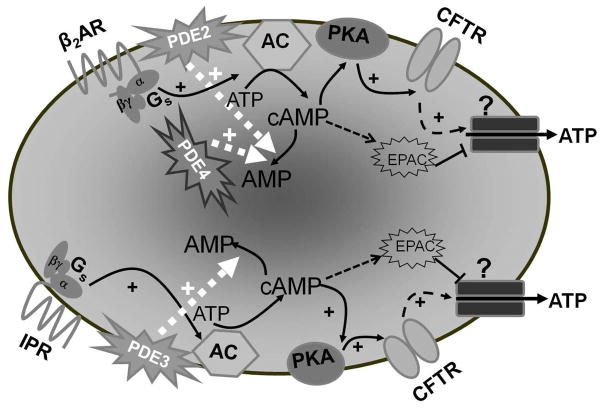Figure 6.
Activation of the β2AR with isoproterenol increases cAMP with subsequent PKA activation. PKA then phosphorylates and activates CFTR, which controls the activity of an ATP conduit in the erythrocyte membrane. Increases in cAMP associated with activation of the β2AR are regulated by the activities of both PDE2 and PDE4. Similarly, activation of the IPR by iloprost results in increases in cAMP, which activate ATP release from the erythrocyte. However, in the case of the IPR signaling pathway, increases in cAMP are regulated by the activity of PDE3. Increases in cAMP not associated with activation of either the β2AR or IPR activate EPACs which inhibit ATP release from the erythrocyte. Abbreviations: β2AR – β2 adrenergic receptor; Gs – the heterotrimeric G protein, Gs; α, β and γ – G protein subunits; PDE – phosphodiesterase; ATP – adenosine triphosphate; cAMP cyclic adenosine monophosphate; AMP – adenosine monophosphate; AC – adenylyl cyclase; PKA – protein kinase A; CFTR – cystic fibrosis transmembrane conductance regulator; ? – unknown ATP conduit; + – activation; IPR – prostacyclin receptor; EPACs -exchange proteins activated by cAMP

